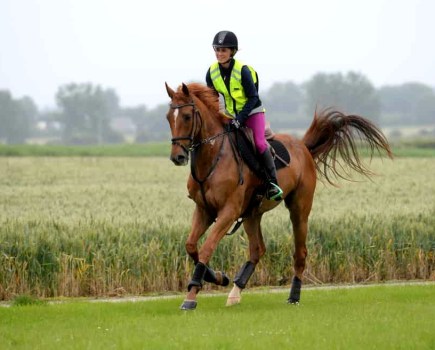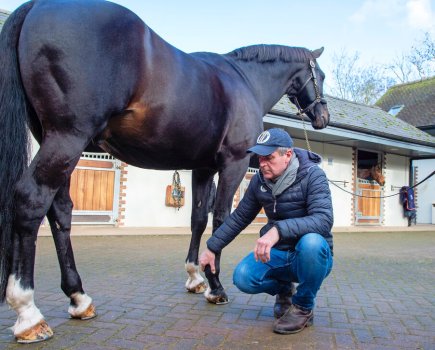Discover what to look for when choosing an equine back care practitioner and how to care for your horse’s back with advice from the McTimoney Animal Association.
We all know how important it is to ensure our horses receive the best care. From saddle fitting to teeth rasping, veterinary care to feeding requirements, worming to shoeing, the list goes on and on! So what should you consider when choosing an equine back treatment?
Well, firstly does your horse need back treatment at all? Ideally, the answer would be no. However, there are many horses working with low grade discomfort that their owners are unaware of. Like us feeling a bit stiff getting out of bed in the morning, our horses can feel mild discomfort at times which improves with appropriate movement and work.
So how do you know if your horse needs a back treatment? You might have noticed symptoms of back pain such as dipping the back when groomed or touched, saddled or girthed. Or symptoms might be work-related such as reluctance to go forwards, difficulty striking off into canter, stiffness when asked to flex the head and neck to one side, or a general loss in performance. Bucking, rearing and napping are obvious symptoms of pain and in these cases, ruling out back pain is very important. Sometimes your horse may not have these symptoms but you may notice a slight change in personality and behaviour which could indicate discomfort.
Choosing a back practitioner
So how to choose your ideal back person? Whatever your preference of therapist, always use a qualified, insured and registered practitioner with a professional animal specific association such as the McTimoney Animal Association to ensure that your animal is treated by someone qualified specifically to treat animals. The practitioner should seek veterinary permission prior to treating your animal, so if they don’t, that should ring alarm bells. If you don’t see an improvement after a couple of treatments, discuss this with your therapist and your vet as there may be an underlying cause to your horse’s discomfort.
McTimoney for horses
The McTimoney approach is a highly effective and holistic treatment using chiropractic techniques to stimulate the change necessary in your horse’s spine and locomotory system and remove discomfort. There is an optimal range of movement between each vertebra in the spine. When joint movement is reduced or one-sided, this produces palpable changes in the spinal column as the body tries to counter the effects of the underperforming joint. McTimoney Animal Practitioners identify these areas and use gentle chiropractic techniques to realign the structure and bring the body back into balance.
This is the only treatment which seeks to rebalance the skeletal frame of your horse to achieve symmetry and equal functioning of the left and right sides. Many horses are one sided and schooling exercises are targeted towards improving flexibility but if your horse’s skeletal frame is not straight it is impossible for him to move equally on both sides.
The McTimoney approach aims to help resolve performance issues which cannot be resolved through veterinary intervention. Injuries or trauma can produce compensatory movement and postural problems, resulting in changes in spinal flexibility. Long-standing compensations from poorly fitting tack or incorrect foot balance are also common reasons for discomfort and symptoms of poor performance.
Reduced flexibility is evidenced by stiffness in movement or difficulty in performing movements which were previously easy to do. You might notice increased weight in one rein, striking off on the wrong canter lead or stopping in front of fences. Some horses will buck, others will simply not go forwards and feel stuffy to ride. Any change in your horse’s behaviour should be investigated, by your vet and your McTimoney Animal Practitioner.
Treatment takes around an hour and your McTimoney Animal Practitioner will take a full history of your horse and where appropriate will ask to see your horse move. They may also ask you to ride or lunge your horse. The practitioner will then palpate your horse, explain their findings and how the treatment will work so you are aware of what they will be doing and this is also an opportunity to discuss what has caused the issues. The treatment uses quick, gentle adjustments on the key locations your practitioner has identified as requiring treatment, and then aftercare advice will be given.
All members of the McTimoney Animal Association are qualified after training with the premier institution of its kind, the McTimoney College in Abingdon, having studied up to three years at postgraduate level attaining an MSc or Post Graduate Diploma in Animal Manipulation.
McTimoney Animal Practitioners are registered with the McTimoney Animal Association.
For more information on your local practitioner go to www.mctimoney-animal.org.uk.









